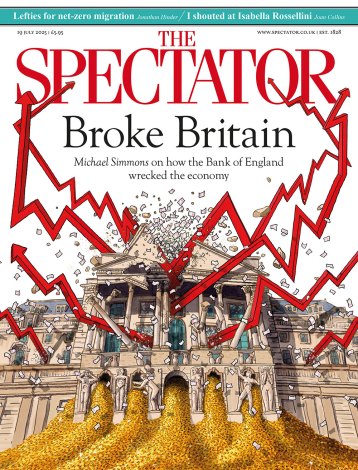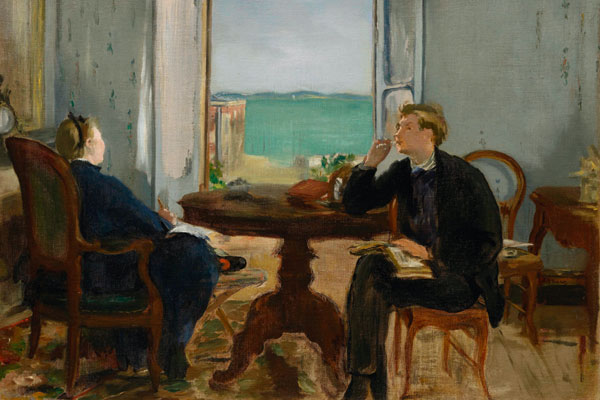The National Gallery is limiting itself to two major shows a year in the Sainsbury Wing. The spring exhibition is Barocci: Brilliance and Grace (27 February to 19 May), the first major showing of Federico Barocci (1535–1612), who managed to fuse Venetian colour with the sense of drawing and pictorial design favoured in Central Italy. The autumn show is The Portrait in Vienna 1867–1918 (9 October 2013 to 12 January 2014), an examination of the punchy Viennese avant-garde of Klimt, Schiele and Kokoschka. Both sound very promising, and for lighter entertainment, there are smaller shows of Frederic Church’s oil sketches (6 February to 28 April) and Michael Landy’s kinetic sculptures (23 May to 24 November) in the main building.
Titles of exhibitions at the British Museum are refreshingly self-explanatory. Ice Age Art: Arrival of the Modern Mind (7 February to 26 May) examines the beginnings of European figurative art in sculpture, ceramics, drawing and ornament. I’m not quite sure how successful Life and Death in Pompeii and Herculaneum (28 March to 29 September) will be, even though it does feature a rare loan of six pieces of carbonised wooden furniture. Perhaps it will boost travel — is the Italian Tourist Board sponsoring the show? The year ends with Columbian Gold (12 September 2013 to 12 January 2014). Watch out for a display of prints (30 May to 1 September) by R.B. Kitaj (1932–2007), selected from a major bequest by the artist’s estate. Will the inventive screenprints he made in the 1960s and 70s be re-evaluated now, having been so long overlooked? I hope so.
To Pallant House in Chichester and the Jewish Museum in London is coming the major Kitaj retrospective from Berlin, dealing comprehensively with all aspects of his work (21/23 February to 16 June). This is an important exhibition to see, for Kitaj is more than a little out of favour in this country at present; a shame, then, that the show has to be divided between two such widely separated venues. The exhibition at the V&A I’m most looking forward to is Masterpieces of Chinese Painting, 700–1900 (23 October 2013 to 19 January 2014). Apparently, this is the fullest survey of Chinese painting, with its distinctive interplay of tradition and innovation, since 1935. At Dulwich Picture Gallery, the summer exhibition will focus on six Slade painters from the early 20th century: Nash, Nevinson, Spencer, Gertler, Carrington and Bomberg (12 June to 22 September), while the autumn sees a celebration of Whistler in London: Battersea Bridge and the Thames (16 October 2013 to 12 January 2014).
The Royal Academy has an unusually exciting programme, starting this month with a grand show in the main galleries, Manet: Portraying Life (26 January to 14 April). The great modern painter of black is often lumped with the Impressionists, though he refused to exhibit with them. His much more classical approach imbued old forms with new meanings, aiming to depict contemporary life realistically; a marvellous painter. In the Sackler Galleries, the American Realist George Bellows (1882–1925) will be given his first retrospective for more than 30 years, and his first substantial showing in the UK (16 March to 9 June). He’s another artist of the modern city, painting vigorous urban genre scenes (boxing a speciality) with zestful social realism.
The RA Summer Exhibition offers its mixed delights from 10 June to 18 August, followed by Mexico: A Revolution in Art, 1910–40 in the Sackler (6 July to 29 September). Not just the usual round-up of muralists such as Rivera and Orozco, this exhibition aims to show the influence of the Mexicans on other artists as diverse as Albers and Burra, Guston and Underwood; should be interesting. The autumn show, Australia (21 September to 8 December), will be a revelation to many: a major survey of Australian art from the 19th century to now, including Aboriginal artists among the likes of Arthur Streeton, Arthur Boyd, Brett Whiteley and Sidney Nolan. And finally, in the Sackler (26 October to 26 January 2014), a show devoted to Honoré Daumier (1808–1879), satirist and painter, too often pigeonholed as a mere caricaturist; a welcome opportunity to see the full range of his achievement.
The many manifestations of the Tate Gallery offer a panoply of shows: starting with Schwitters in Britain, at Tate Britain (30 January to 12 May), and William Scott at Tate St Ives (26 January to 6 May). Schwitters, the high priest of Dada, was interned when he fled to England from Nazi Germany, and virtually the only art he could sell in Cumbria in his declining years was paintings of flowers. We make amends now with a focus on his radical Merz projects (anything goes together: three-dimensional collage). Meanwhile, the William Scott centenary celebrations kick off at Tate St Ives, after which this exhibition will tour to The Hepworth, Wakefield in the summer, and the Ulster Museum, Belfast in the winter. Other Scott exhibitions are planned: at Enniskillen Castle Museum (15 February to 31 August), the Jerwood Gallery in Hastings (27 April to 10 July) and the Victoria Art Gallery in Bath (7 September to 17 November). A catalogue raisonné of Scott’s oil paintings is nearing completion: time for a reassessment of this compelling artist.
Among the other Tate shows are Lichtenstein: A Retrospective at Tate Modern (21 February to 27 May), an exhaustive account of Pop Art hero Roy Lichtenstein’s gilded career, claiming to reveal his artistic diversity. I look forward to being pleasantly surprised. There’s Chagall at Tate Liverpool (8 June to 6 October) and another Paul Klee exhibition at Tate Modern (15 October 2013 to 9 March 2014). Tate Britain opens its newly refurbished main galleries with Looking at the View (12 February to 2 June), an examination of the importance of landscape in British art. The summer show is the long-awaited focus on L.S. Lowry, an exhibition achieved by popular demand rather than Tate intention. Curated by the high panjandrum of Modernism T.J. Clark, it is entitled Lowry and the Painting of Modern Life (25 June to 20 October), and might at last take the old boy seriously, despite establishment snobbery about his popularity. Finally, a pair of shows running in tandem at Tate Britain: Patrick Caulfield and Gary Hume (5 June to 1 September). Could be pure joy.
The Courtauld Gallery has another promising selection, starting with Becoming Picasso: Paris 1901 (14 February to 26 May), which focuses on the year this ambitious 19-year-old made his breakthrough. Collecting Gauguin: Samuel Courtauld in the 20s (20 June to 8 September) occupies the summer slot, before The Young Dürer: Drawing the Figure (17 October 2013 to 12 January 2014) closes the year. At the Estorick Collection are 80 prints, paintings and drawings by the marvellous Morandi (16 January to 7 April), followed by a display (17 April to 16 June) about the dealing and collecting of Eric Estorick, whose centenary falls in 2013. At the Whitechapel, the highlight of the year will be a major show (October to December) by sculptor Sarah Lucas (born 1962), who is making work specifically for the gallery. Lucas first came to prominence with the YBAs, but has survived with her integrity (and wit) intact.
Outside London, to the Holburne Museum in Bath, comes Rembrandt and his Contemporaries: Paintings from the Royal Collection (25 May to 29 September). The Watts Gallery near Guildford will stage (18 June to 27 October) the first retrospective of Frank Holl (1845–88), one of those Victorian painters now so out of fashion, but actually a talented purveyor of tragic social realism much admired by van Gogh. At the Sainsbury Centre for Visual Arts in Norwich, the galleries newly refurbished by Norman Foster will house Masterpieces: Art and East Anglia (14 September 2013 to 24 February 2014), featuring work by a wide range of notables from Constable to Ana Maria Pacheco. And the Ditchling Museum, on the Sussex Downs, will reopen in the spring, with displays of artists who worked locally such as Eric Gill and the calligrapher Edward Johnston.
In December last year, the Public Catalogue Foundation announced that finally all 212,000 oil paintings in the public domain had been catalogued, photographed and posted online. More than 3,000 museums, galleries and collections across the UK have participated in this remarkable scheme, and anyone can access the treasures of this great public resource by logging on to: www.bbc.co.uk/arts/yourpaintings. For those who prefer their information in printed form, there’s a superb series of picture books available also, arranged by county. But, remember, this is only a hub of information, not a substitute for the real thing. By all means look up your favourite paintings, but then do make the effort to go and see them. No museum can survive without visitors. Happy New Year viewing!






Comments